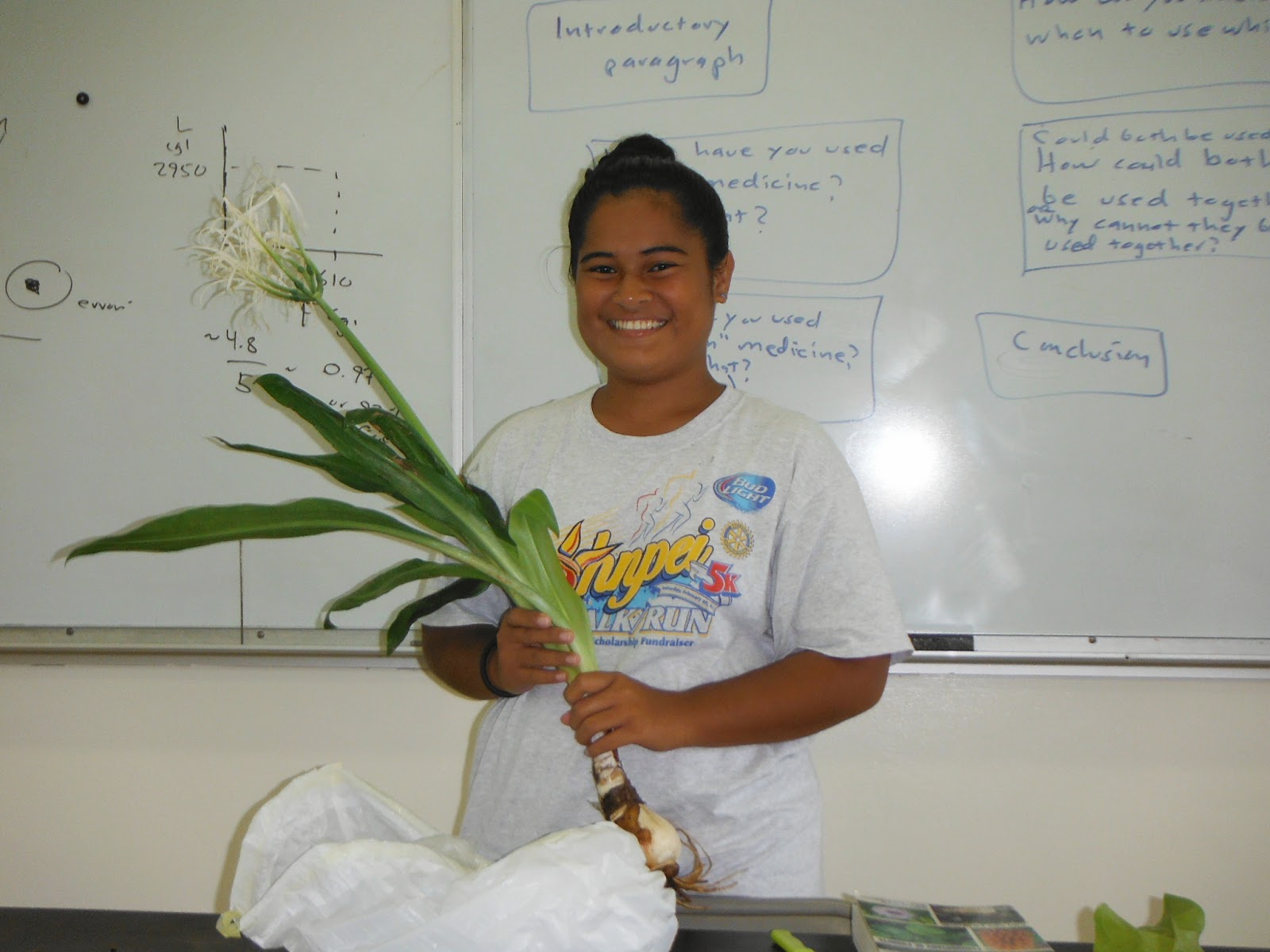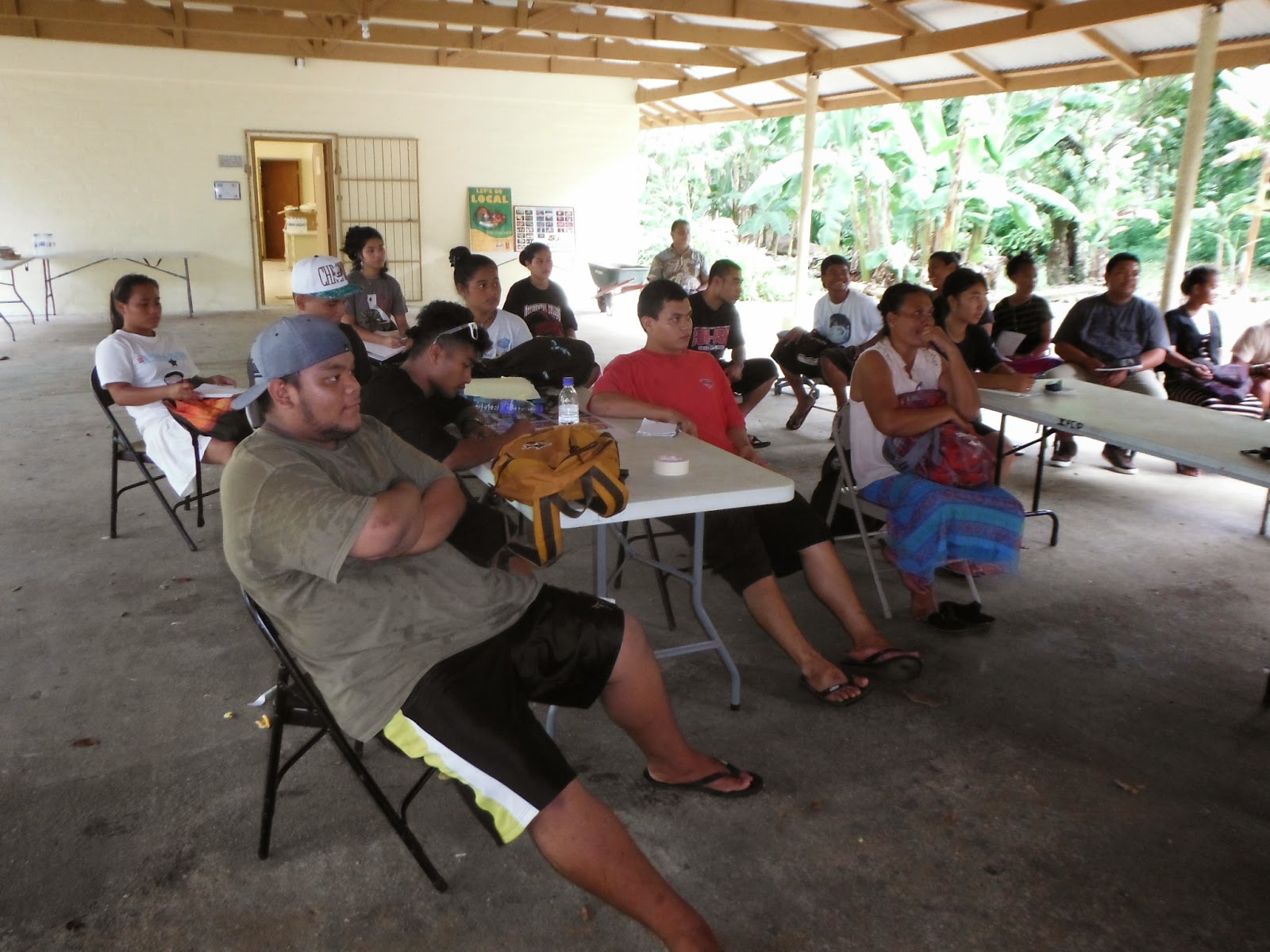Healing Plants Part Two

Part two of the ethnobotany class healing plant presentations. Lina Lawrence of Pohnpei covered the use of spider lily, Crinum asiaticum, to protect wounds from flies. This use is covered on page 253 of Balick's Ethnobotany of Pohnpei . As cultural knowledge of their plants is lost, students are likely to turn more often to sources such as Balick's excellent text for material. A decade ago students could ask an elder for something to share with the class. Today the knowledge continues to erode and be lost. Gordon Loyola of Pohnpei covered the use of ilau, Clerodendrum inerme, to treat pink eye. The juice of the leaf is squeezed into the eye to relief the condition. Patty Mario of Chuuk spoke of the use of "rho" - roasted copra - to treat facial rashes. Initially she refers to the rash as not being related to a boil, but later she used the word boil. Unclear the exact nature of the rash which rho treats. Patty Mario presenting. Brian Mwarike...




